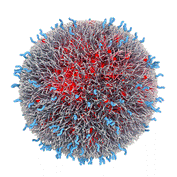Center, Biotechnology

Nebraska Center for Biotechnology: Faculty and Staff Publications
Document Type
Article
Date of this Version
4-20-2022
Citation
Published in final edited form as: ACS Chem Neurosci. 2022 April 20; 13(8): 1232–1244.
doi:10.1021/acschemneuro.1c00847.
Author manuscript; available in PMC 2022 June 24.
Abstract
Alzheimer’s disease (AD) is the most common neurodegenerative disorder. Pathologically, it is characterized by the deposition of amyloid beta (Aβ) plaques and presence of neurofibrillary tangles. These drive microglia neuroinflammation and consequent neurodegeneration. While the means to affect Aβ plaque accumulation was achieved how it affects disease outcomes remains uncertain. Cerium oxide (CeO2) reduces Aβ plaques, oxidative stress, inflammation, and Alzheimer’s disease (AD) signs and symptoms. Specifically, CeO2 nanoparticles (CeO2NPs) induces free radical scavenging and cell protective intracellular signaling. This can ameliorate the pathobiology of an AD-affected brain. In order to investigate, CeO2NPs affects for microglia neurotoxic responses a novel formulation of europium doped CeO2NPs (EuCeO2NPs) was synthesized. We then tested EuCeO2NPs for its’ abilities to generate cellular immune homeostasis in AD models. EuCeO2NPs attenuated microglia BV2 inflammatory activities after Aβ1–42 exposure by increasing the cells’ phagocytic and Aβ degradation activities. These were associated with increases in the expression of the CD36 scavenger receptor. EuCeO2NPs facilitated Aβ endolysosomal trafficking and abrogated microglial inflammatory responses. We posit that EuCeO2NPs may be developed as an AD immunomodulator.

